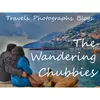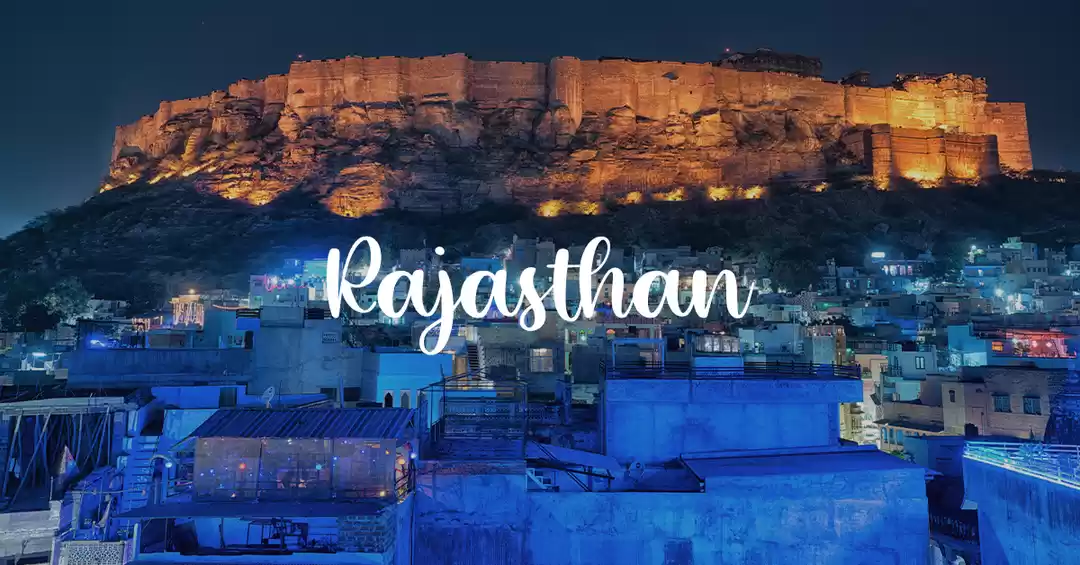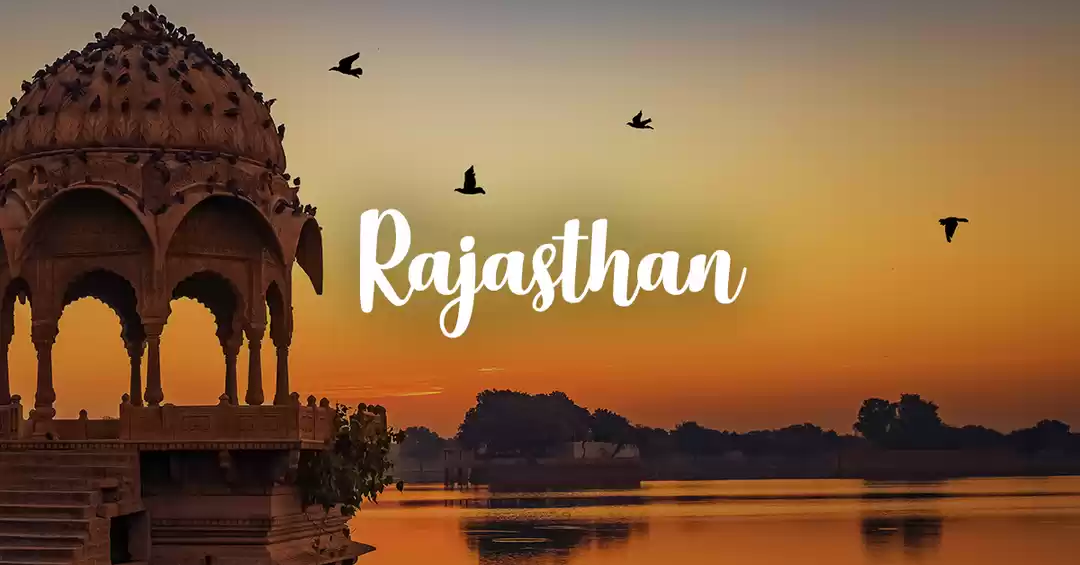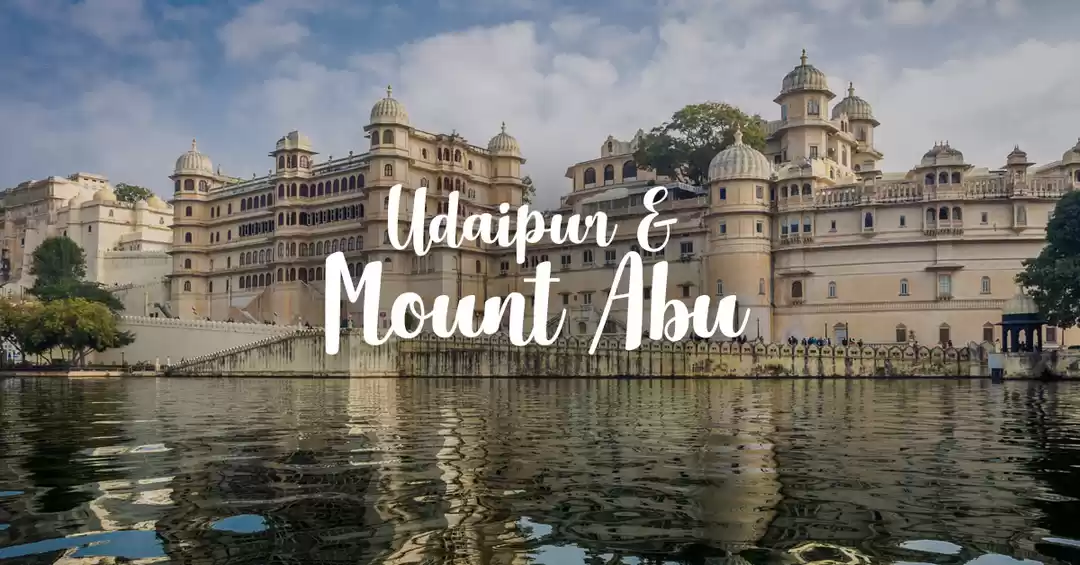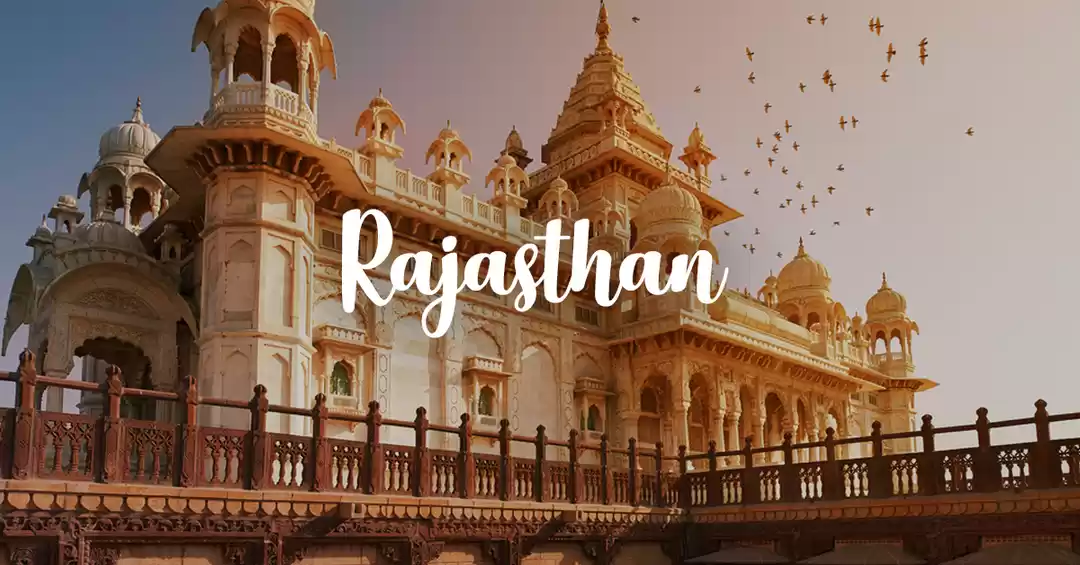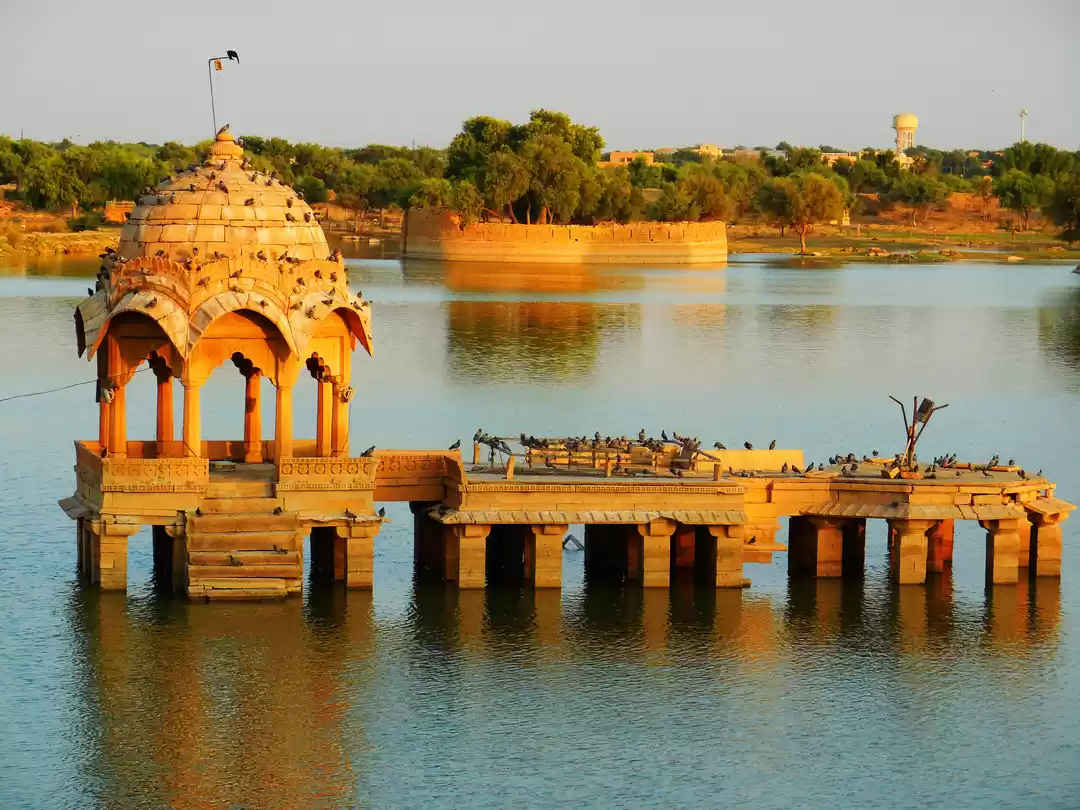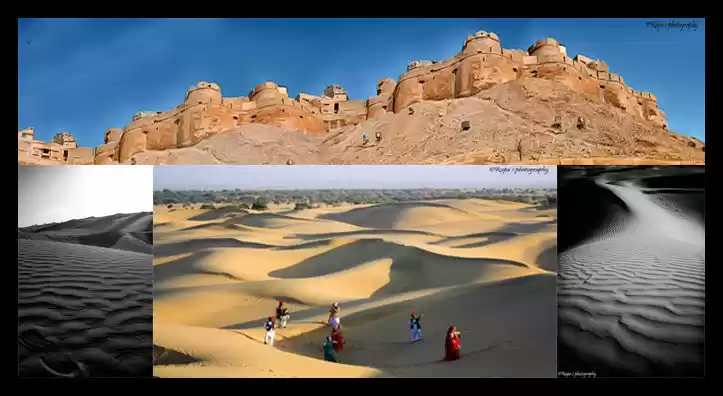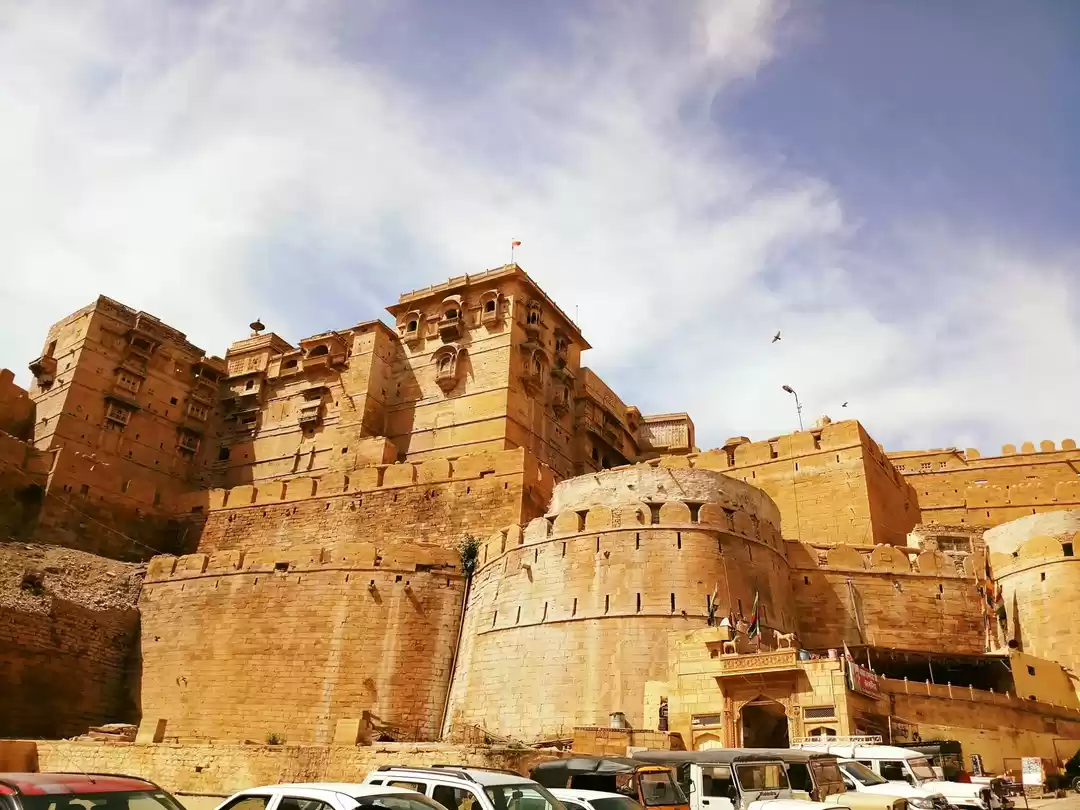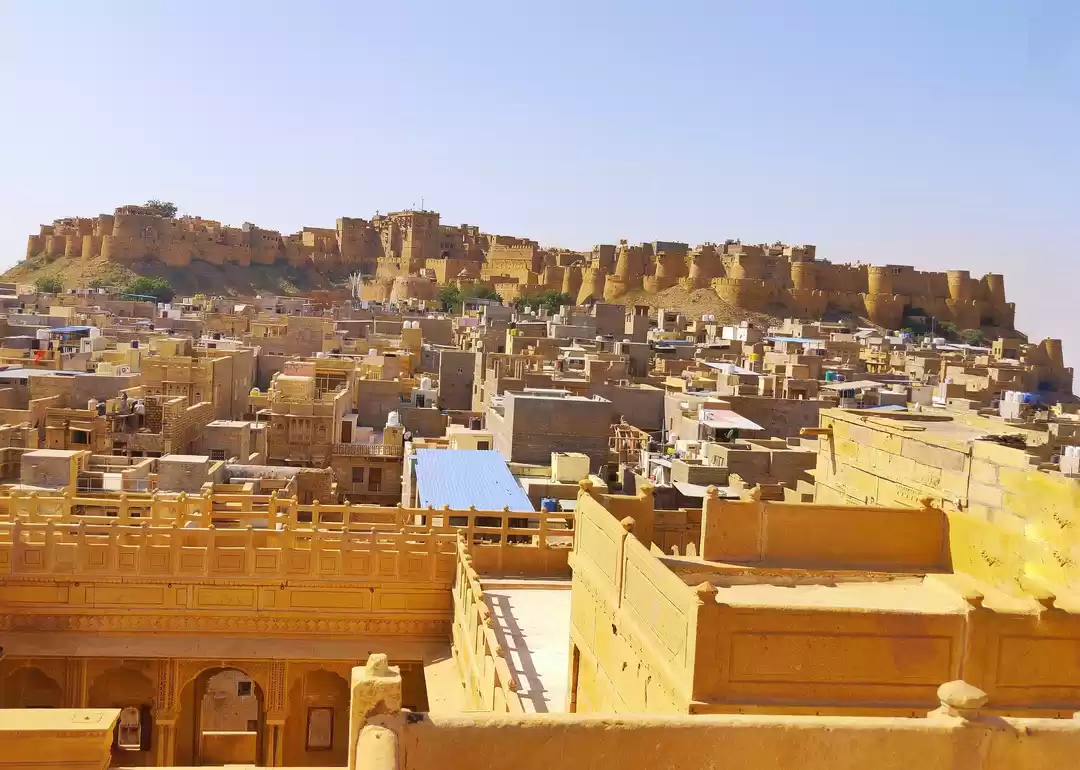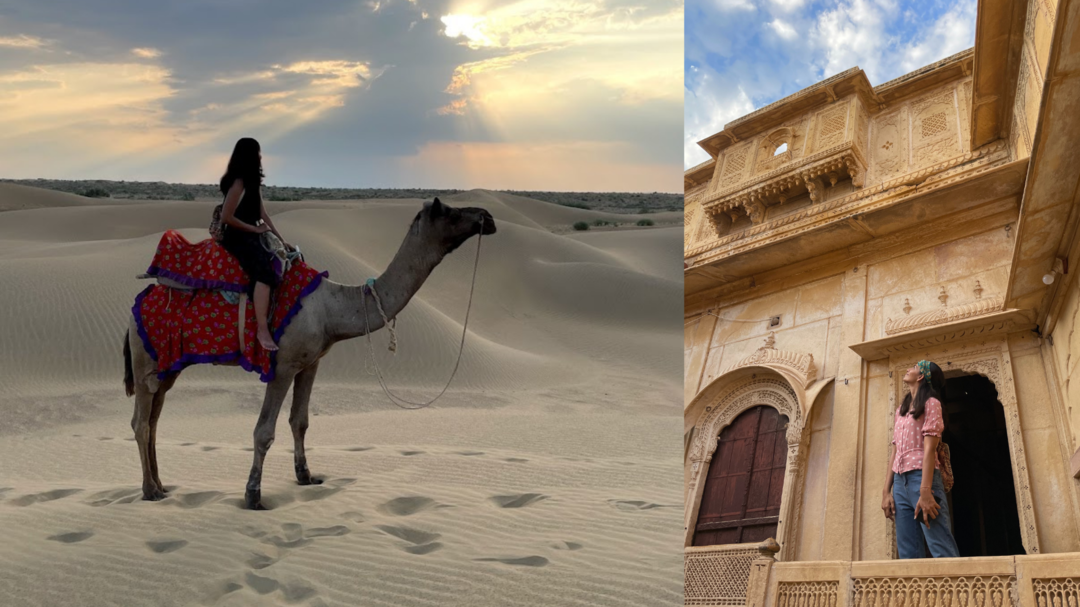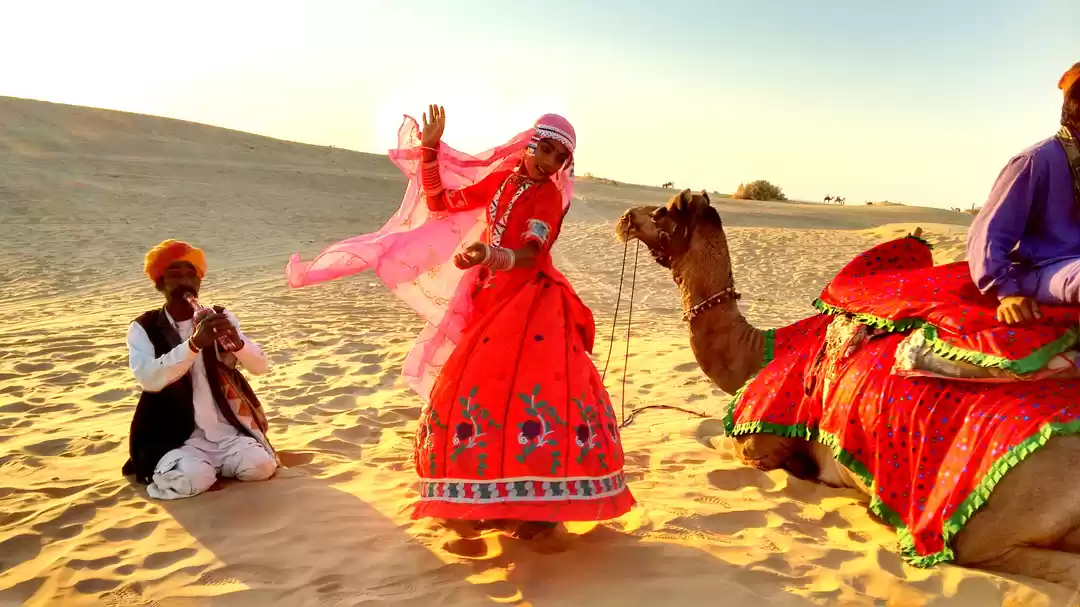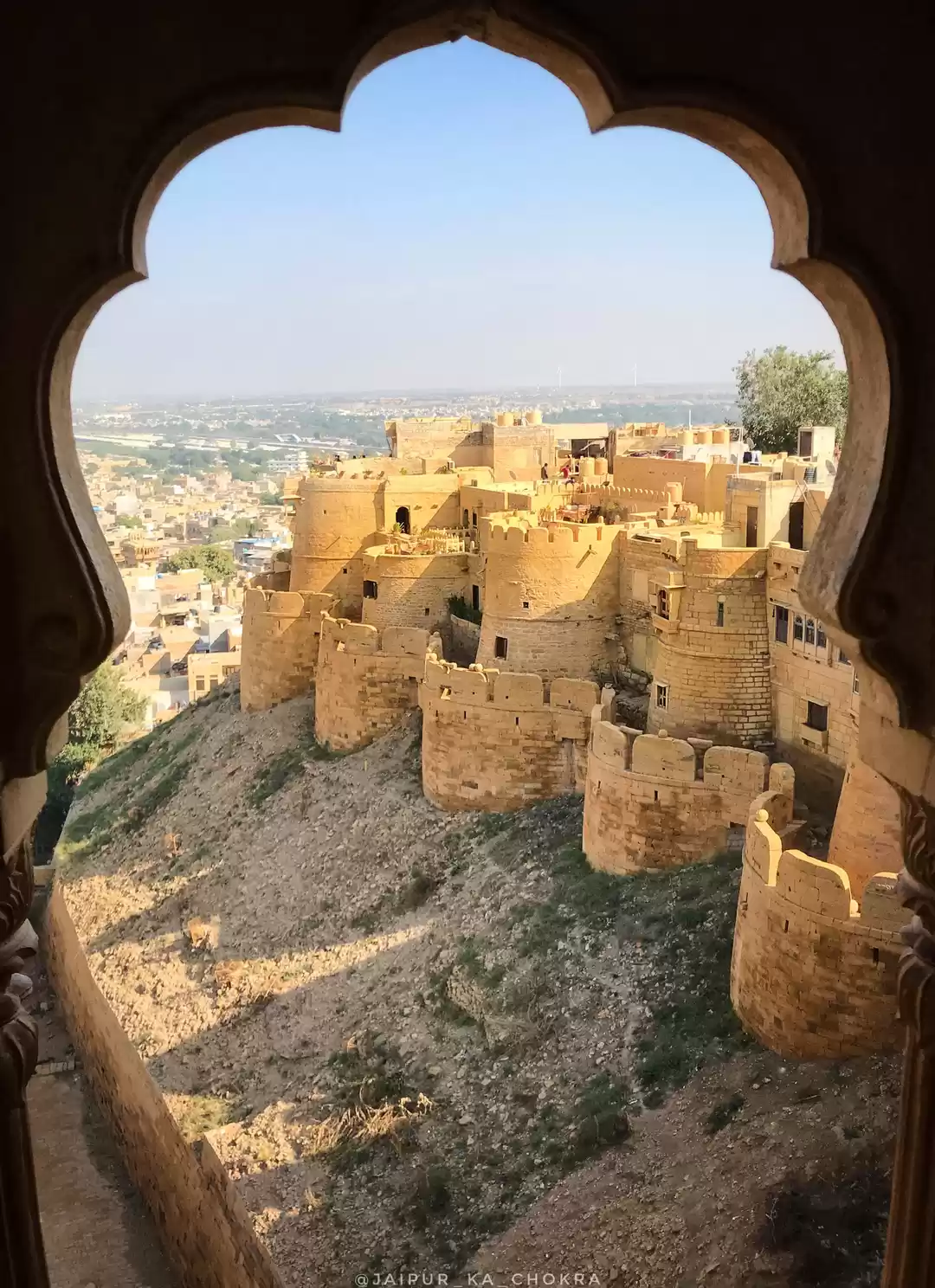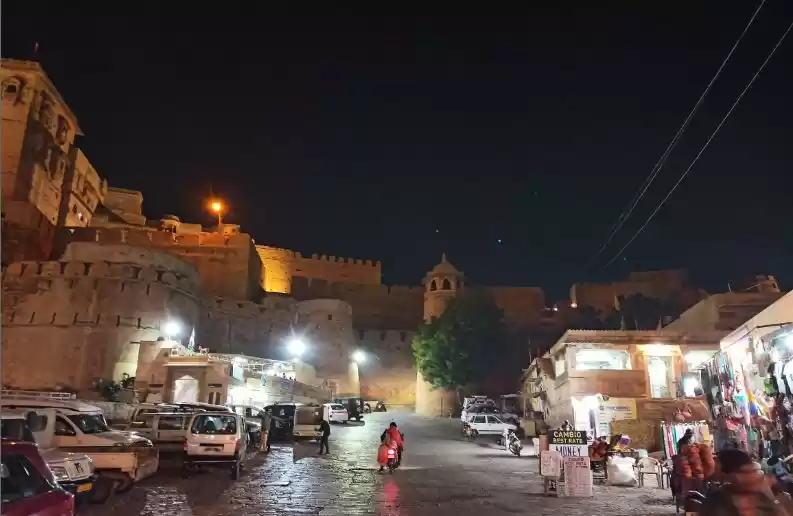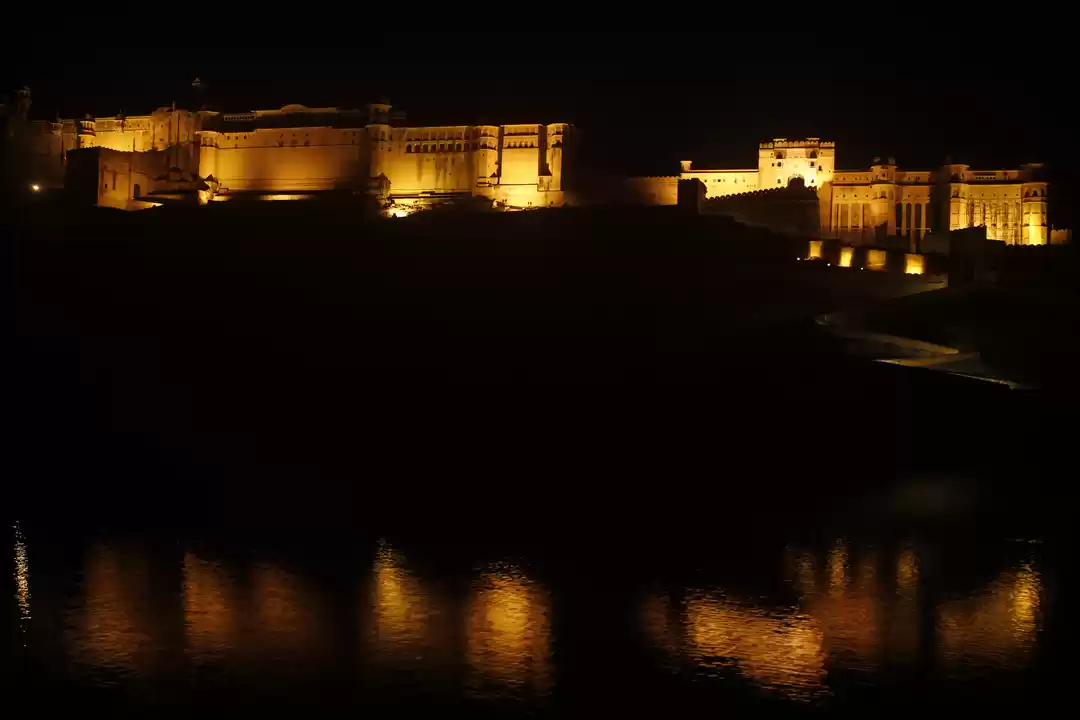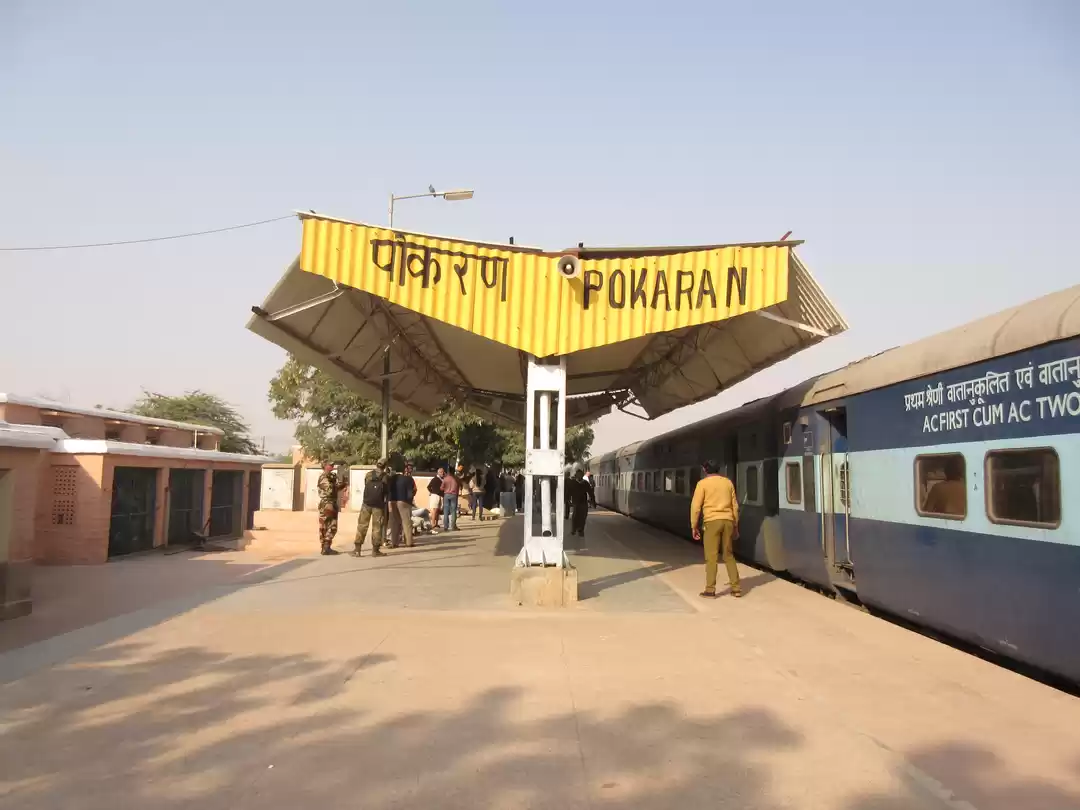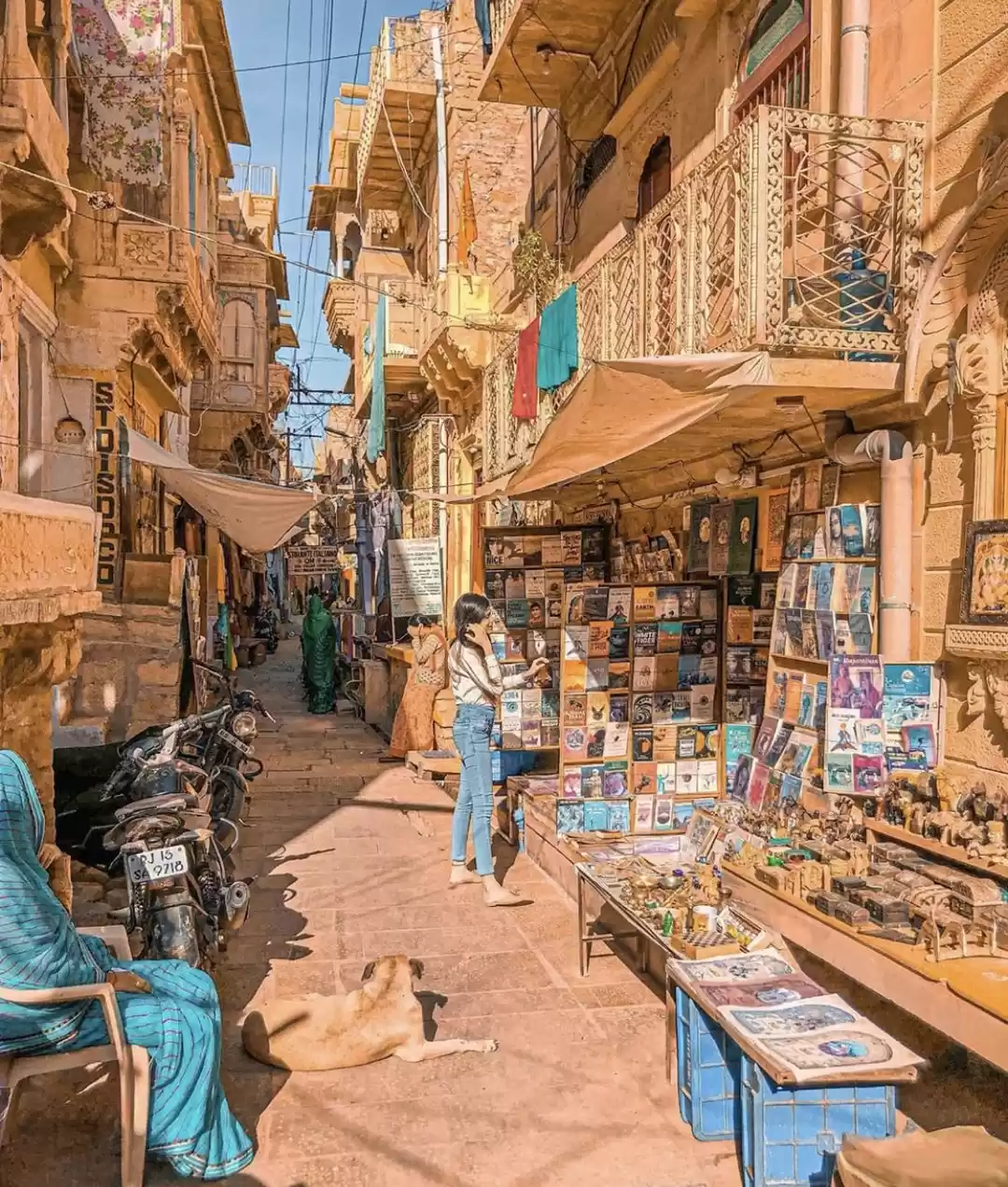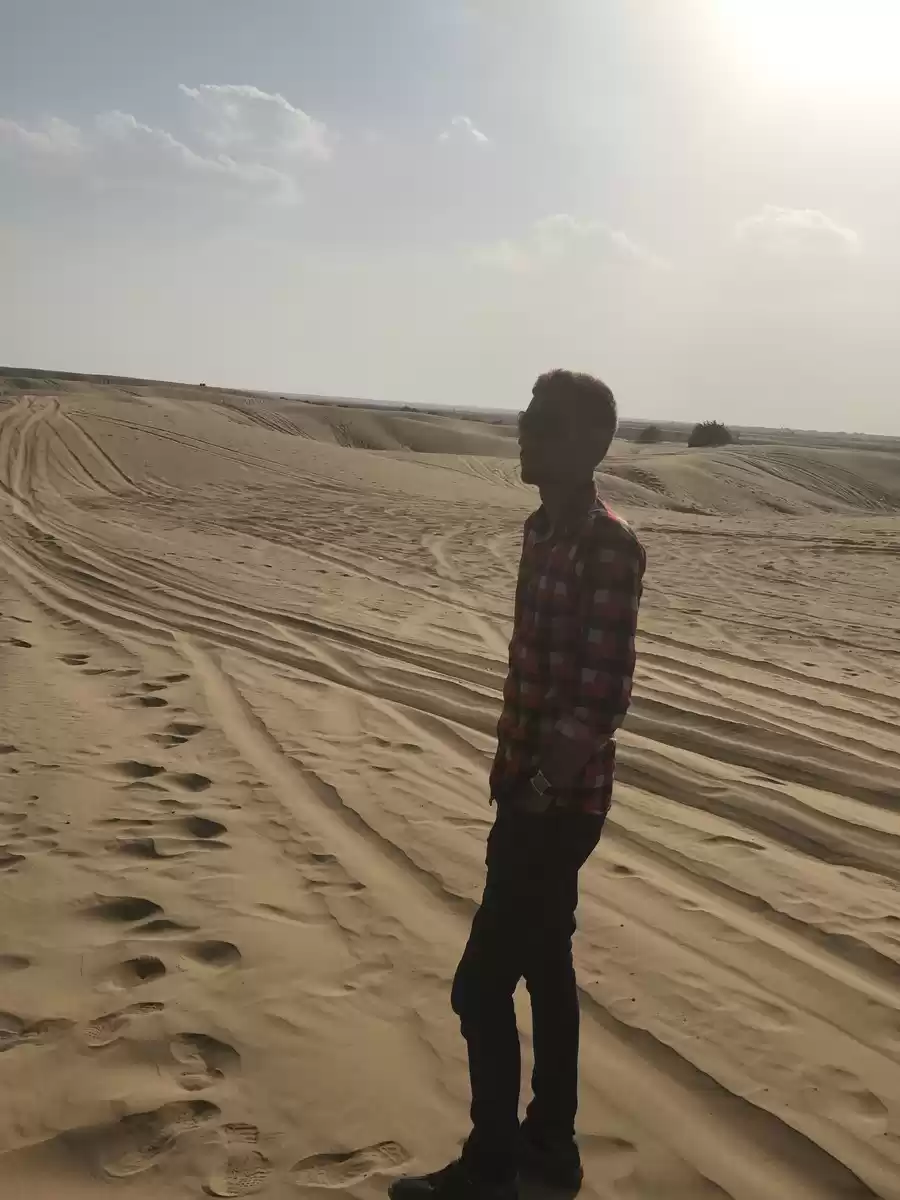
However, before describing anything else, I must mention the Jaisalmer Railway Station. It was simply beautiful – an indication of what we could expect in the days to come (On a separate note, probably it is the cleanest station I have seen in India!). From the golden sandstone carved building, we could see the famous Golden Fort of Jaisalmer – more famously known as ‘Sonar Kella‘ – perched on top of a hillock.
The next morning, after an early morning trip back to the dunes, we started our drive back to Jaisalmer. On the way, we took a small detour to a 200 year old ruined and abandoned (and supposedly, haunted) village of Kuldhara. Though centuries old, the village houses and their intricate stone works were mesmerizing. After taking some photos and a bit of looking around the ruins, we continued our journey back to Jaisalmer.
Golden Fortress – Sonar Kella
Next morning (Day 3), we finally went inside the fabled fortress. The name – Sonar Kella – meaning Golden Fort in Bengali was given by the legendary Oscar-winning director Satyajit Ray, when he shot one of his movies here in 1974. Sonar Kella, one of UNESCO World Heritage sites, is the largest ‘living fort’ (people live within fort walls) in the world and is accessible only by foot through one single narrow path and across four strong gates. Inside the fort, you will be carried back to the times of the kings and queens, as you walk around the Palaces (there are three separate but interconnected Palaces inside the fort – Maharaja Mahal, Maharani Mahal and another Mahal for the princes and the princesses), the living quarters, the old Hindu and Jain temples and the locals living inside the fort, dressed in traditional clothing. You cannot help but notice the rich hues of the clothes, rugs, turbans and other accessories the people wear here. A view of the city from top confirms the name of Jaisalmer as the Golden City as all the houses below bore the same golden hue – being made of the abundant golden sand-stones.

After returning from Bada Bagh to the city, we took a quick look in the City Palace – Mandir Mahal – half of which houses the royal family of the present Maharaja, and half of which is a luxury hotel, before proceeding towards the view-point that overlooked the city. Even though dimly lit, the point presented a breath-taking view of the whole city with the huge Sonar Kella, standing tall over it as a guardian angel.

The Havelis and Gadisar Lake
After coming down from the fort, we roamed around the city itself – checking out some of the old Havelis (mansions) of the kings’ rich subjects – mainly, the ministers of court and traders. It was surprising to see that some Havelies looked grander than the kings’ fortress from inside – especially the Patwa ki Haveli – whose owner, Patwa used to be a rich trader. Other notable Havelis were called Nathmalji ki Haveli and Salem Singh ki Haveli.

Finally, we rounded up our Jaisalmer sojourn with a visit to the Gadisar Lake – a man-made lake and only water source of the city, that was often visited by the rulers for spending a relaxing afternoon by the lake. Cenotaphs like platforms inside the water added a charming look to the lake’s mud-colored water.

After a quick lunch comprising the local delicacies – Daal, Baati, Choorma, Gatte Ka Saag and some Lassi , we proceeded to the railway station, from where we took the train to our next destination – to the home of the famous trading community in India, the Marwaris – to Jodhpur!

The Golden City…
I was back home in India during the post-monsoon part of the year – around September, 2013. During this visit, I had an incredible trip across the length of Rajasthan – The Royal State. This is the first in a series of three blogs I write about my journey across the sand-dunes and through fortified cities…
This trip was long time coming… a long awaited family trip to Rajasthan – the enduring land of colors that had eluded our ‘Visited’ list for so long! So, our journey started at New Delhi. To understand the changing vegetation type across the state, one must take the train. As our train sped across the state – from the eastern most part to the western most part, the gradual decrease in the greenery was unmistakable. Crossing through the cities of Jaipur and Jodhpur, and remote villages like Pokhran – famous as the Nuclear Detonation Test Site for the Indian Armed Forces – we reached Jaisalmer in the afternoon of Day 1.
Jaisalmer is on the edge of the Great Indian Desert – the Thar Desert. Moving west, it is the last big habitation in India before you reach Pakistan across 200 km. of Sand-dunes. Jaisalmer is the bastion of the Bhati people – an ancient clan that had built the city in 1156 AD under the leadership of Maharawal Jaisal Singh, a Rajput Bhati king. The city is famously known as The Golden City due to the abundance of golden sandstone in and around the area.

Sam Sand Dunes and Kuldhara Village
As we drove from the station towards our hotel, the Fort became more and more clear. A mesmerizing site! However, we postponed a detailed tour of the city for later and proceeded with our plan and drove to a Desert Camp on the outskirts of Jaisalmer. After about 40 km drive, crossing through a couple of tribal villages, the ‘typical’ desert features – wave-like sand-dunes – became visible. This place and its dunes are known as Sam Sand-Dunes. The main attraction, other than the miles and miles of pristine dunes, was a short Camel Ride across the dunes. Well, it was probably more exciting than I had imagined. Nevertheless, mounting and dismounting the camel was quite a bit of a scary experience. You might as well check this link on Camel Riding before you try it!
After a back-breaking camel ride, we proceeded towards our accommodation – a couple of earthen-huts, fashioned similar to the actual village houses. If you have never experienced village life in India, you must try this out. Not only was the set-up authentic, we were treated with tribal song and dance performances by the local villagers. Needless to say, it was a captivating experience to see the women dance in their multicolored ‘Ghagras‘ – long frock-like dresses – with long moustached and turbaned men singing and playing their rudimentary but melodic instruments.

Bada Bagh
Evening of Day 2, after some quick lunch, we left for the Bada Bagh – the Royal Crematorium having long parallel arrays of golden sandstone carved Chattris or Cenotaphs looking over a lake. These Cenotaphs was erected honoring the dead kings of past. Spending the evening there and watching sun set was truly magical! Bada Bagh is located close to Loduvra – the ancient capital of the erstwhile Jaisalmer state before the newly built Jaisalmer became the capital in 1156. Traveler’s tip: Since it is a bit outside the city, carry some water and food with you.


